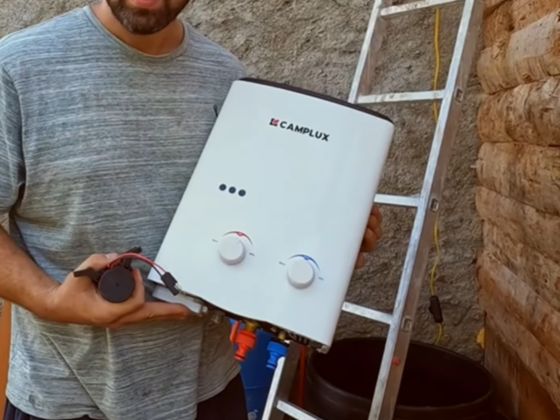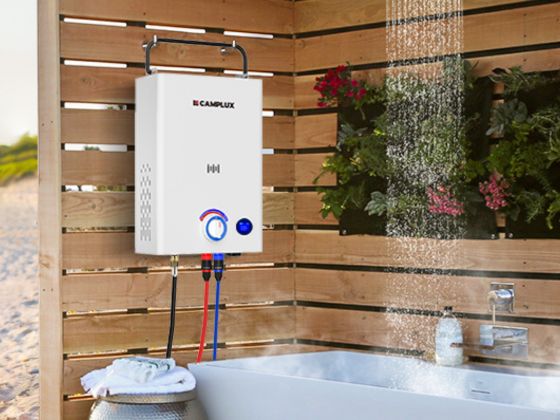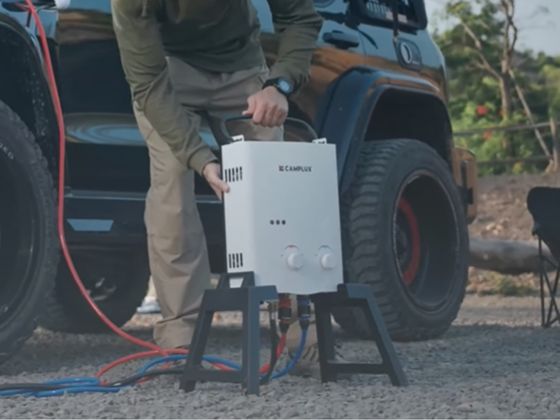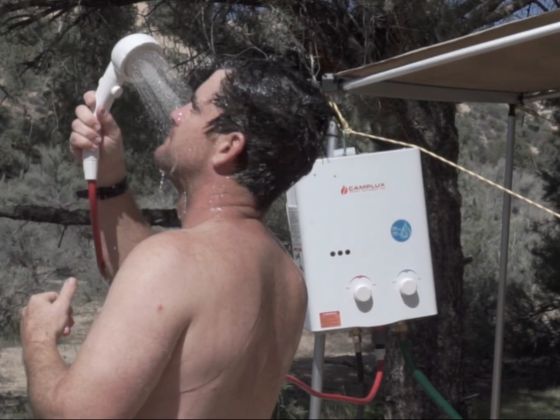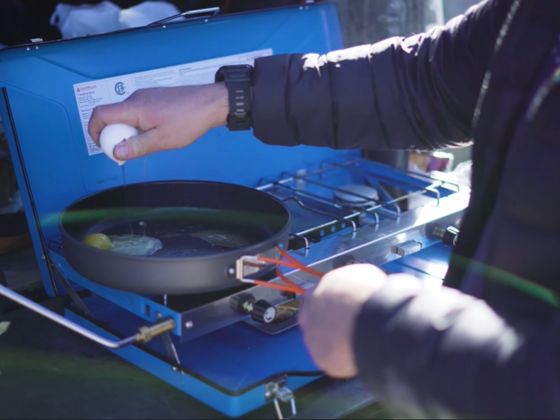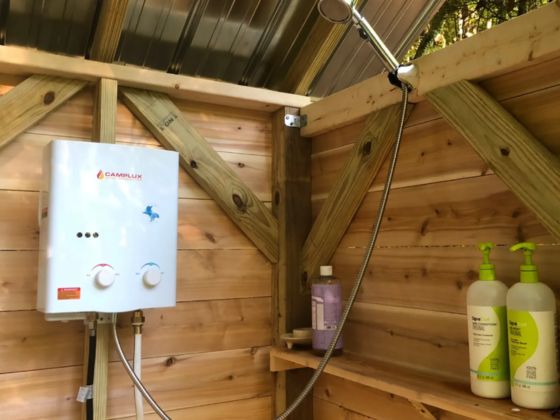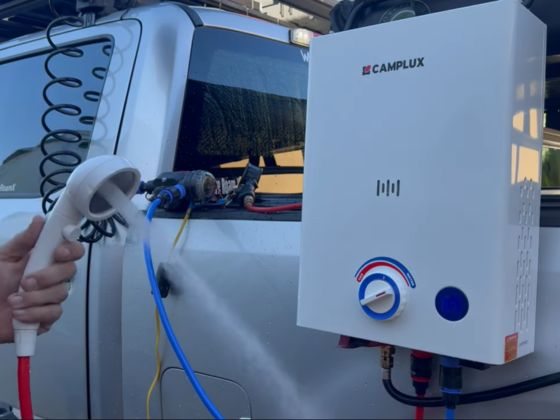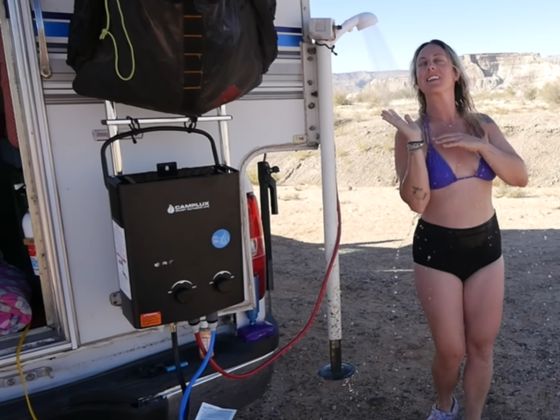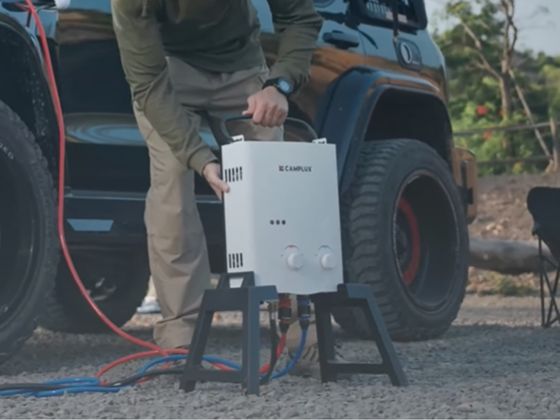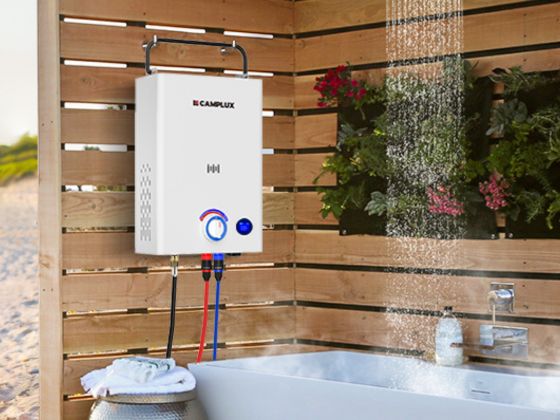Why a Portable Hot Water System Matters in Australia
If you've ever tried to scrub the red dust off after a long day's drive, rinsed a sandy wetsuit in a stiff sea breeze, or washed down gear in a chilly country evening, you'll know hot water isn't a luxury—it's sanity. Across Australia, conditions swing wildly: alpine mornings, coastal winds, inland bores with variable pressure. A good portable hot water setup turns all that into no dramas. Think of it as your mini, on-demand "hot water station" you can take anywhere—from a beach car park to the back paddock.
This guide compares common portable water-heater types and sizes, then maps them to real Aussie use cases: lightweight camping, caravans and backyard showers, fishing and surf days, and barns/stables. We'll use Camplux models as the benchmark because they're purpose-built for the outdoors, have straightforward controls, and play nicely with common 12V pumps and LPG setups here.
Quick Finder: Match Your Use Case to a Heater
-
Lightweight camping, weekenders, simple rinses
Choose a compact, light unit with modest flow (around 5 L/min) that starts easily at low water pressure. Pick: Camplux AY132. -
Caravans, vanlife, backyard showers
Go for a stable, mid-range flow (around 8 L/min) with better temperature rise and wind resistance. Pick: Camplux BV158. -
Anglers, beach days, surfing trips
You want quick startup, easy carry, and resilient performance in wind/salt mist. Pick: BV158; AY132 if you prefer ultra-light. -
Barns, stables, rural cleaning
You'll need higher flow (around 10 L/min) for washing animals, gear, and large areas, with longer run times. Pick: Camplux F10.
What to Look For Before You Buy
Flow rate (L/min). This is how much hot water the unit can deliver. Picture a kitchen tap versus a garden hose: higher flow means you can shower and rinse gear more comfortably, or have multiple tasks in quick succession. For solo camping, ~5 L/min is plenty. For regular showers or family use, ~8 L/min is a sweet spot. For stables or heavy cleaning, ~10 L/min helps you power through.
Temperature rise. This describes how much the heater can lift incoming water temperature. On a brisk alpine morning with near-cold feed water, you'll want more "oomph." Mid-range and larger models provide a stronger rise at usable flow rates. A simple mental model: colder feed + wind exposure + higher desired shower temp demands a more capable unit.
Minimum water pressure. In the wild, you won't always have mains pressure. Look for a heater that ignites at low pressure and pairs well with a 12V pump. If you're filling from jerry cans or a stream via a small pump, that low-pressure start is gold.
Safety and compliance. Prioritise flame-out protection, overheat safeguards, and stable combustion in wind. Use quality LPG regulators and hoses suitable for Australian conditions. Keep clearances, ventilation, and mounting guidance front of mind—especially around caravans and under awnings.
Durability and portability. An outdoor unit cops wind, dust, and the odd knock. A sturdy body, reliable igniter, and solid fittings pay for themselves. For hikers or minimal kits, weight and a simple hanging bracket matter.
Gas use and efficiency. If you're doing quick 3-5 minute showers, expect modest consumption. Longer barn wash-downs? Budget more gas and give the unit good airflow. Efficiency helps stretch your bottle through a long weekend.
Accessory ecosystem. Showerheads, inline filters, brackets, pumps, and storage options turn a bare heater into a polished setup. Check compatibility with your caravan tank, 12V system, and the fittings you already own.
Camplux Line-up at a Glance
- AY132 (≈5 L/min): Ultra-portable and easy to hang. Ideal for solo campers or couples who want quick, no-fuss showers and rinse-offs. Low start pressure, simple controls, grab-and-go vibe—too easy.
- BV158 (8 L/min): The people's choice for caravans, families, and backyard shower points. Balances flow, temperature rise, and stability in wind. Great all-rounder for beach days and general touring.
- F10 (≈10 L/min): Muscle for barns and stables. Faster gear wash-downs, better for multiple tasks back-to-back. If you're cleaning pens, rinsing tack, and showering after—this is your workhorse.
Best for Lightweight Camping
You're packing light, the site might have patchy pressure, and you want a hot rinse before a cuppa at dusk. AY132 nails this brief. It lights up with low water pressure, sips gas for short showers, and hangs on a simple hook or stand. It's also a good choice for spur-of-the-moment trips where setup time matters.
Compared with generic micro heaters, the difference shows up in ease of ignition, steadier heating, and the feel of the fittings—especially when your hands are cold. Pair it with a compact 12V pump and a collapsible bucket for a tiny, complete system that still feels like home when the temperature dips.
Wrap-up: For minimalists chasing reliable comfort, AY132 is a no-brainer.
Best for Caravans and Backyard Showers
Caravan living needs consistency. You want a comfortable shower on a cool arvo and the ability to wash dishes without fuss. BV158 hits that 8 L/min sweet spot, which translates to a proper shower feel with decent temperature rise, even when the weather's fresh.
It pairs neatly with typical caravan pumps and tanks, and handles breezy conditions with fewer hiccups. If you're setting up a semi-fixed outdoor hot shower at home, BV158 gives you a smooth, everyday experience without feeling over-built.
Wrap-up: For vanlife and backyard showers, BV158 keeps the family happy—no dramas.
Best for Anglers and Beach Days
After a long session on the water, you want salt, sand, bait, and fish smell gone—fast. Wind and spray can mess with lesser heaters, which is why BV158 is a great pick here: reliable startup, enough flow to rinse wetsuits and boards properly, and a comfortable shower afterwards. If you wander lighter and only need a quick rinse, the AY132 still does the job in a super-compact package.
Add a simple inline filter if you're pulling from a sandy container, and always give the unit a quick freshwater flush before stowing to keep it in top nick.
Wrap-up: For surf and fish days, BV158 is the dependable all-rounder; AY132 if you pack ultra-light.
Best for Barns and Stables
Washing horses, cleaning stalls, blasting mud from boots and tools—this is where F10 earns its keep. Its higher flow (around 10 L/min) helps you rinse large surfaces quickly and comfortably. You'll notice fewer compromises when running longer or tackling multiple jobs in a row.
Secure mounting, good ventilation, and sturdy hose management matter in busy barns. Consider a sprayer with different nozzle patterns for gentle rinses versus heavier cleaning. If hot water helps animals relax and shortens wash time, F10 can pay you back in daily convenience.
Wrap-up: For stables and serious rural cleaning, the F10 is the right tool for the job.
Spec Cheat Sheet: Flow, Temperature Rise, and Safety
- Flow rate in plain English: 5 L/min = nimble solo showers; 8 L/min = comfy family showers; 10 L/min = farm-grade cleaning and continuous use. Imagine bucket-filling speed: the faster the bucket fills, the stronger your rinse.
- Temperature rise explained: Colder feed-in water needs more heating muscle. If you camp in frosty spots or shower after sundown, choose a model with headroom. Mid-range (8 L/min) and higher (10 L/min) models hold temperature better at practical flow.
- Minimum water pressure: If your pump is small or you're drawing from a container, low start pressure equals reliable ignition. It's the difference between "ahh, warm" and staring at the showerhead waiting for heat.
- Safety: Look for flame-out protection (cuts gas if the flame dies), overheat protection, and stable combustion in wind. Combine with a quality regulator and appropriate hosework for Australian LPG.
Setup and Compatibility in Australia
- LPG and regulators: Use a regulator suited to your gas bottle and the heater's requirements. Keep hose runs tidy and inspect them regularly. Position bottles upright and secure.
- Pumps and power: A basic 12V pump is plenty for camping and caravan setups. Check the pump's flow/pressure rating and match it to the heater's minimums. A modest inline filter protects internals from grit.
- Mounting and ventilation: Ensure clearances from walls, awnings, and combustible materials. Heaters need fresh air and safe flue paths—especially important in semi-fixed caravan or backyard installs.
- First-start checklist: Confirm gas leak-free connections, open water first, then ignite, and tune temperature with both gas and water knobs. If ignition is fussy, check pump pressure, battery/igniter, wind exposure, and regulator function.
Real-World Kits and Bundles
- Minimalist camping kit: AY132 + small 12V pump + collapsible bucket + compact showerhead. Fits in a milk crate; set up in minutes.
- Caravan comfort kit: BV158 + caravan tank/pump + stable mount + simple wind shield. Adds a proper shower feel after each day's drive.
- Barn wash kit: F10 + reinforced hose + multi-pattern sprayer + inline filter. Tackle horses, gear, and wash bays efficiently.
Side-by-Side Comparison (Plain-English Snapshot)
AY132 (≈5 L/min): Lightest and most portable. Low-pressure start. Best for solo campers, couples, quick rinse-offs, and anyone counting grams.
BV158 (8 L/min): Balanced performance. Better temperature hold in cool weather, comfortable showers for families, great for caravans and backyard points.
F10 (≈10 L/min): High flow for serious jobs. Ideal for barns/stables, multiple wash tasks, and longer run times.
Typical extras to consider across all three: inline filter, quality regulator and hoses, a sturdy hook or bracket, and a carry bin to keep everything tidy.
Buying Tips, Warranty, and Support
Lock in your use case first, then pick flow and temperature rise to match. Make sure your pump and power are compatible, and add the right accessories so you're not improvising on the first trip. Local warranty and support are worth their weight in gold when you rely on your system far from town.
Seasonal sales can be a great time to round out your kit—grab spare hoses, extra showerheads, or a second pump so you've got a backup for longer tours.
Find Your No-Dramas Hot Water Setup
From a quick campsite rinse to a comfy caravan shower and a thorough stable wash, there's a Camplux that fits how you live. AY132 keeps things feather-light, BV158 is the everyday hero, and F10 brings serious muscle. Pick the one that matches your adventures and get back to the good stuff—sunsets, stories, and that well-earned shower.
FAQs
- Will these heaters start with low water pressure?
- Yes—choose a model with a low minimum start pressure and pair it with a suitable 12V pump. AY132 shines for minimalist setups, while BV158 and F10 match well with typical caravan and barn pumps.
- What if sea breeze blows the flame out?
- Look for flame-out protection and stable combustion. Shield the unit from direct gusts, and mount at a sensible height. BV158 and F10 handle breezy sites well when positioned correctly.
- How do I get better temperature on cold mornings?
- Use a model with more headroom (BV158 or F10), reduce flow slightly to boost temperature rise, and warm the feed water if possible. A quick test run before your shower helps dial it in.
- Do I need a pro to install?
- Portable setups can be user-installed when used outdoors as intended, following instructions. For semi-fixed or fixed installations—especially near caravans, structures, or where local codes apply—consult a qualified gas fitter.
- What about hose lengths and pressure drop?
- Long runs can reduce pressure. Use appropriate hose diameter, keep runs as short as practical, and position the pump close to the water source. Step up to a higher-flow model if you consistently need more volume.
- How do these compare with electric or solid-fuel options?
- Gas is fast, portable, and independent of mains power, which suits remote Aussie travel. Electric can be quiet and simple if you have the amps and infrastructure. Solid-fuel can be charming but slow and less controllable.
One-Time Keyword Mentions (integrated naturally)
You might hear these terms in product descriptions or when comparing specs; here's how they relate to the setups above: a portable gas water heater is the general category for units like AY132, BV158, and F10; if you want faster warm-up at the tap, you're after instant gas hot water; a caravan-friendly system is often described as an lpg gas hot water system; for coastal camps and fish-cleaning days, an outdoor lpg water heater is spot-on; many weekenders simply call the whole rig an lpg camping shower; if you want a more integrated rig with pump and fittings, that's a Portable Water Heater; some spec sheets label the style as an lp tankless water heater; if you're building a backyard wash point, you'll hear terms like outdoor shower propane water heater; for travel rigs that need quick heat-up, portable propane hot water is a handy shorthand; and if you're comparing technical spec sheets, instant hot water heater lpg is another way brands describe these on-demand LPG units.
In short: pick the Camplux that matches your flow needs and conditions—AY132 for ultralight trips, BV158 for caravans and family showers, F10 for barns and bigger jobs—and you'll be sorted for many, many arvos to come.


